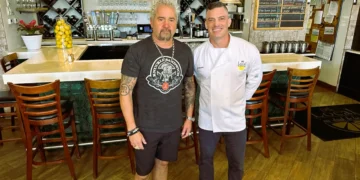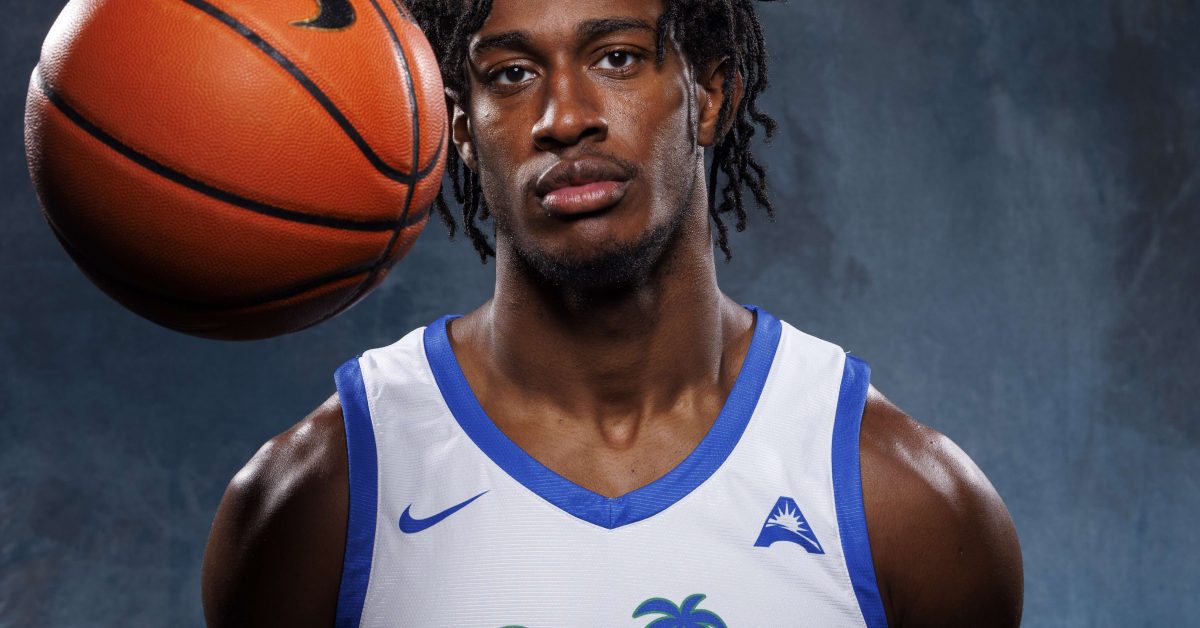Florida Gulf Coast University men’s basketball players were having their own March Madness on a late Friday afternoon. Their season had ended a couple of weeks earlier, and they were on the campus beach playing with Gel Blasters, part water pistols without the water and paintball guns without the paint.
The toy firearms were a surprise ending after the team heard a presentation from MarketPryce about how to take advantage of new NCAA rules allowing athletes to make money from their name, image and likeness. Each player walked away that Friday with weekend spending money for playing with the Gel Blasters.
Two years ago, it would have been an NCAA violation to do what the basketball team did, but on July 1, 2021, the acronym NIL was born. The NCAA, which oversees college sports, changed its rules to allow student-athletes to earn money with their name, image and likeness.
But the simple idea of allowing athletes to profit from jersey sales and personal appearances turned into something bigger. The results were as if somebody had detonated an atomic bomb instead of a firecracker.
Cashing in
Universities still can’t pay their athletes, but rich alumni and boosters can, thanks to NIL. One prominent example is found two hours across Alligator Alley at the University of Miami: Billionaire alumnus John Ruiz wasn’t shy about making public his use of NIL money, spending anywhere from $7 million to $10 million to entice athletes to transfer to Miami or keep them there, according to various websites.
Ruiz signed an $800,000, two-year deal with Nijel Pack when he transferred to Miami from Kansas State to play basketball … and promote Ruiz’s company Life Wallet.
The school has drawn criticism for its handling of NIL deals, including a year’s probation and minor sanctions for the women’s basketball program, and its success in the 2023 women’s and men’s NCAA basketball tournaments (the women made the Elite Eight; the men the Final Four) only intensified the scrutiny.
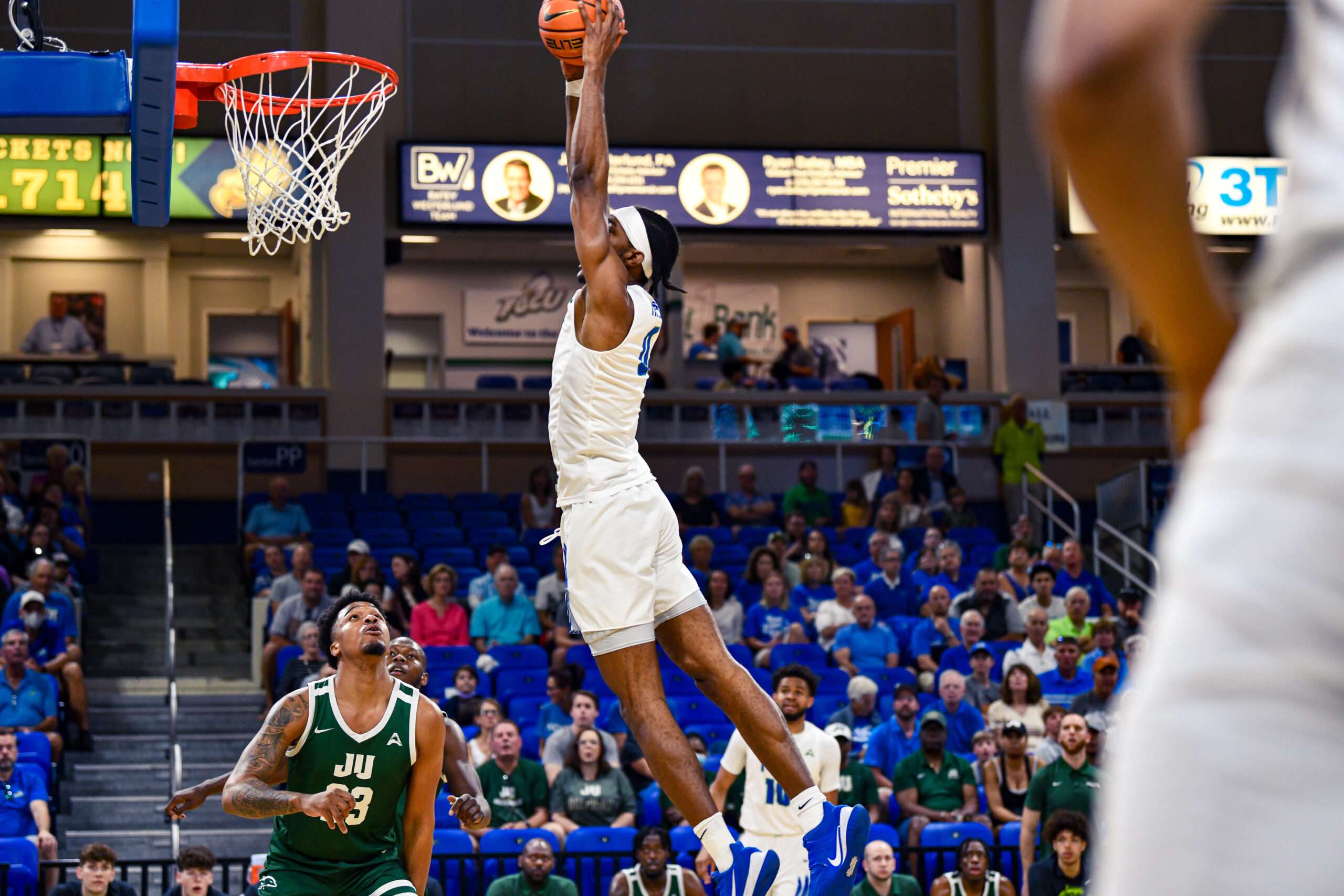 Eagle awareness
Eagle awareness
FGCU isn’t in the same league when it comes to competing with the University of Miami or other large schools. The Eagles don’t have the large donor base bigger schools have. They don’t have collectives, a recent phenomenon of alumni and boosters donating money to a “pot” to give to athletes through the NIL. FGCU shoots Gel Blasters, the big schools shoot bazookas.
“For us, we have to deal with it,” FGCU Athletic Director Ken Kavanagh says. “We’re still staying simple with it. We’re trying to do general stuff.”
FGCU does have something many universities don’t have: a highly ranked entrepreneurship program. The school ranks 15th nationally. Kavanagh worked with entrepreneurship professor Mark Bole to come up with a plan on how to meld NIL with the program.
“I talked to nearly every team,” Bole says.
FGCU has about 260 athletes, he said, and he has worked with 60 to 70 over the past 18 months. The instruction comes in different ways; it might be helping the athletes find a voice with social media or improving or developing a website or product.
“We’re trying to stay focused on the athletes and help them through the process—because they can get overwhelmed by it if they are not careful,” Bole says.
The athletic department is also helping athletes in other ways; it made a deal with Campus Ink for the FGCU NIL Store to sell clothing with an athlete’s name and number. The player receives anywhere from $8 to $15 per item sold, according to the Campus Ink website.
“The NIL store is fun, cool and creative,” says men’s head basketball Coach Pat Chambers. “At least it allows players to make some pocket money.”
The site is dominated by players from the men’s and women’s basketball teams, the most popular sports on campus.
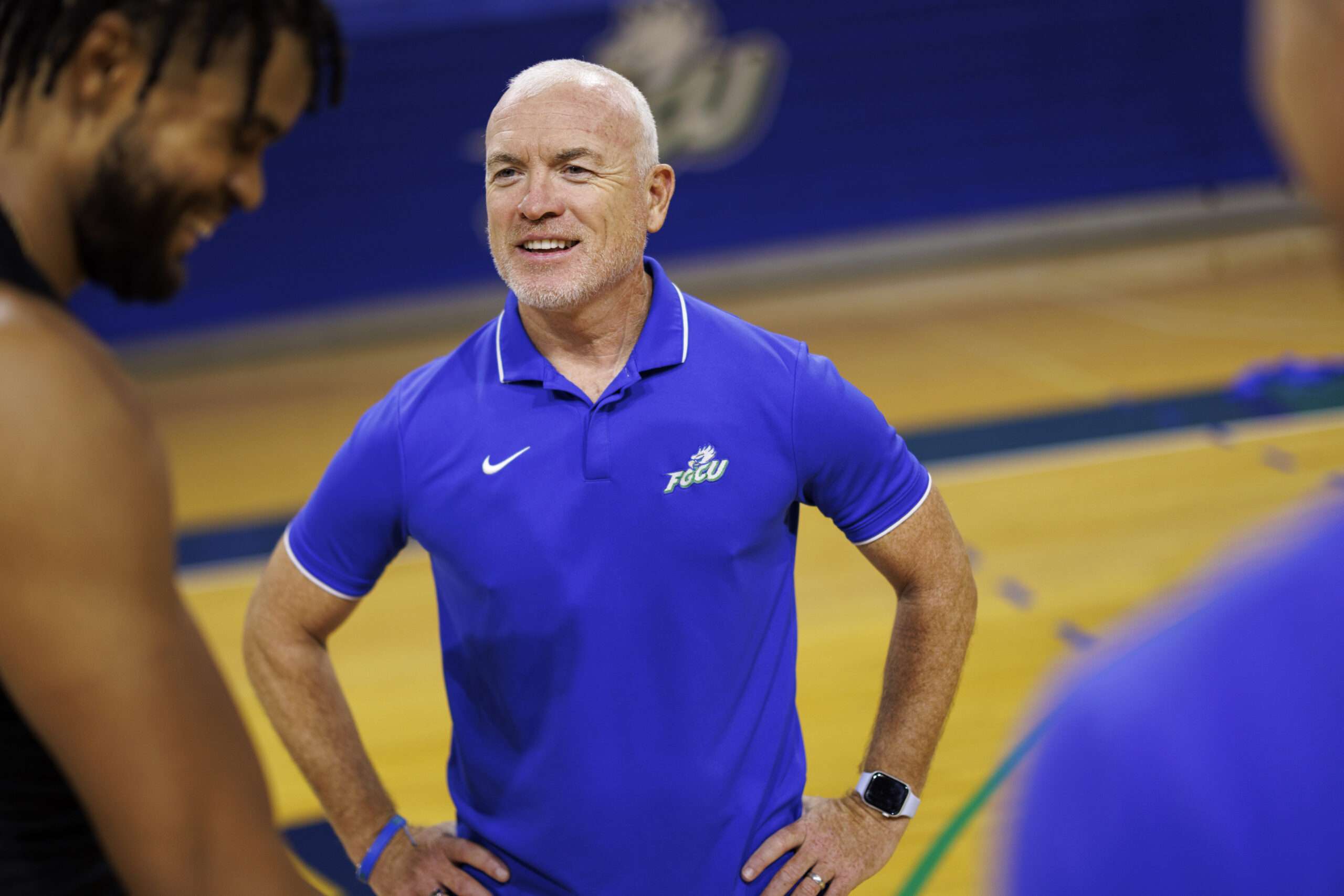
In search of innovation
The NIL Store fits into what the men’s basketball program is trying to do to compete.
“We have to be creative and innovative,” Chambers says. “We have to think outside the box.”
Kevin Hudash, the director of operations and NIL, is the outside-the-box thinker for the men’s team. He began educating himself about NIL, scouring the internet, reading stories and seeking ideas. He noticed that a University of Miami player he followed, Isaiah Wong, was in a short film, and contacted MK Hustle CEO Matt Kahn, the representative who found Wong the part.
“He reached out to me, which was very atypical,” says Kahn, who founded the Atlanta-based MK Hustle. “It’d usually be me pounding the pavement to get clients.”
Hudash also reached out to MarketPryce, the company that made the March presentation, after seeing a story that it had signed a deal with Florida State’s collective. FGCU signed a deal with MarketPryce in the spring to allow athletes to use its website.
MarketPryce and MK Hustle are two of the many companies fighting for NIL dollars, though they rely on different business models. MarketPryce’s web page is a landing site for athletes, agents and companies—CEO Jason Bergman compares it to dating sites, where people match their similar interests. Athletes and agents pay to join, where they can see what companies are on the site and what deals they can make. MK Hustle is more agent-driven, where an agent finds opportunities for athletes and the company keeps 20% of what money the athletes receive.
On their hustle
Kahn found opportunities for two FGCU basketball players, starting with Dakota Rivers—6 feet, 8 inches tall with an electrifying personality matching the energetic dunks that make him a fan favorite. He’s also a favorite on TikTok, where he has more than 395,000 followers.
Rivers said he’s been making videos since he was 14 or 15. He turned to TikTok to kill time during the COVID-19 pandemic and before the NCAA approved NIL. He mixes basketball and workout videos with product videos, sprinkling in serious content with messages about mental health, and opts for quality over quantity when it comes to posting. He’s also picky when it comes to what he promotes.
“Dakota turns down more than he accepts,” Kahn says.
Brandon Dwyer is a different case, and an example of how the landscape is changing for student-athletes.
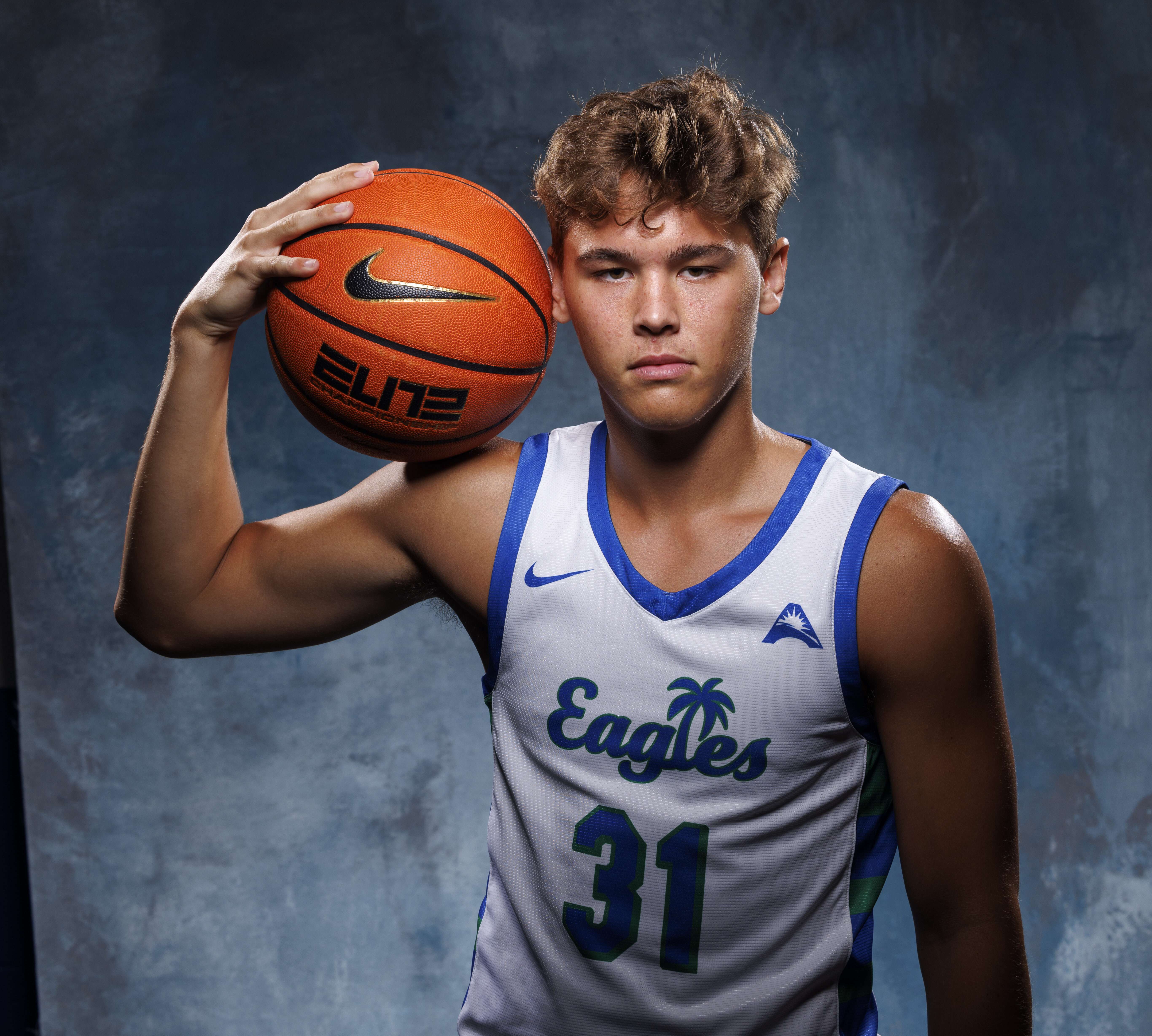
“Brandon is the poster child for us when we recruit,” Hudash says.
The question about NIL is part of the recruiting conversation for the men’s and women’s basketball teams.
“They always ask the question about NIL opportunities,” women’s coach Karl Smesko says about recruits.
Dwyer is an unlikely candidate to be making money with NIL: He’s a non-scholarship player who played two minutes all season. Hudash went to a skeptical Kahn about Dwyer a few months after recommending Rivers.
“I have a wild card I want to talk to you about,” Kahn remembers Hudash telling him. “He’s a walk-on, but I think he’s really talented with social media.”
Kahn couldn’t market him as a basketball player, so he marketed him as an influencer. Dwyer’s TikTok videos making fun of his basketball ability gained a following. Some have been viewed more than one million times.
“It turns out he’s really gifted at it,” Kahn says.
Dwyer created his TikTok account Aug. 25 of last year. He gained 265,000 followers in seven months. He had 349,500 followers by mid-April.
He has a long list of products he promotes, from Suja Juice—where he only gets the product, not cash—to Muddy Bites Ice Cream to Cramly.ai, a study tool. The product received 150,000 likes in the first two hours after he promoted it, and 500 people used the site at least one time. He even booked a deal with the local restaurant Poke Fusion at University Village to get free meals. He promotes the restaurant on social media every time he eats there.
Dwyer makes between $10,000 and $15,000 with his deals, Kahn said.
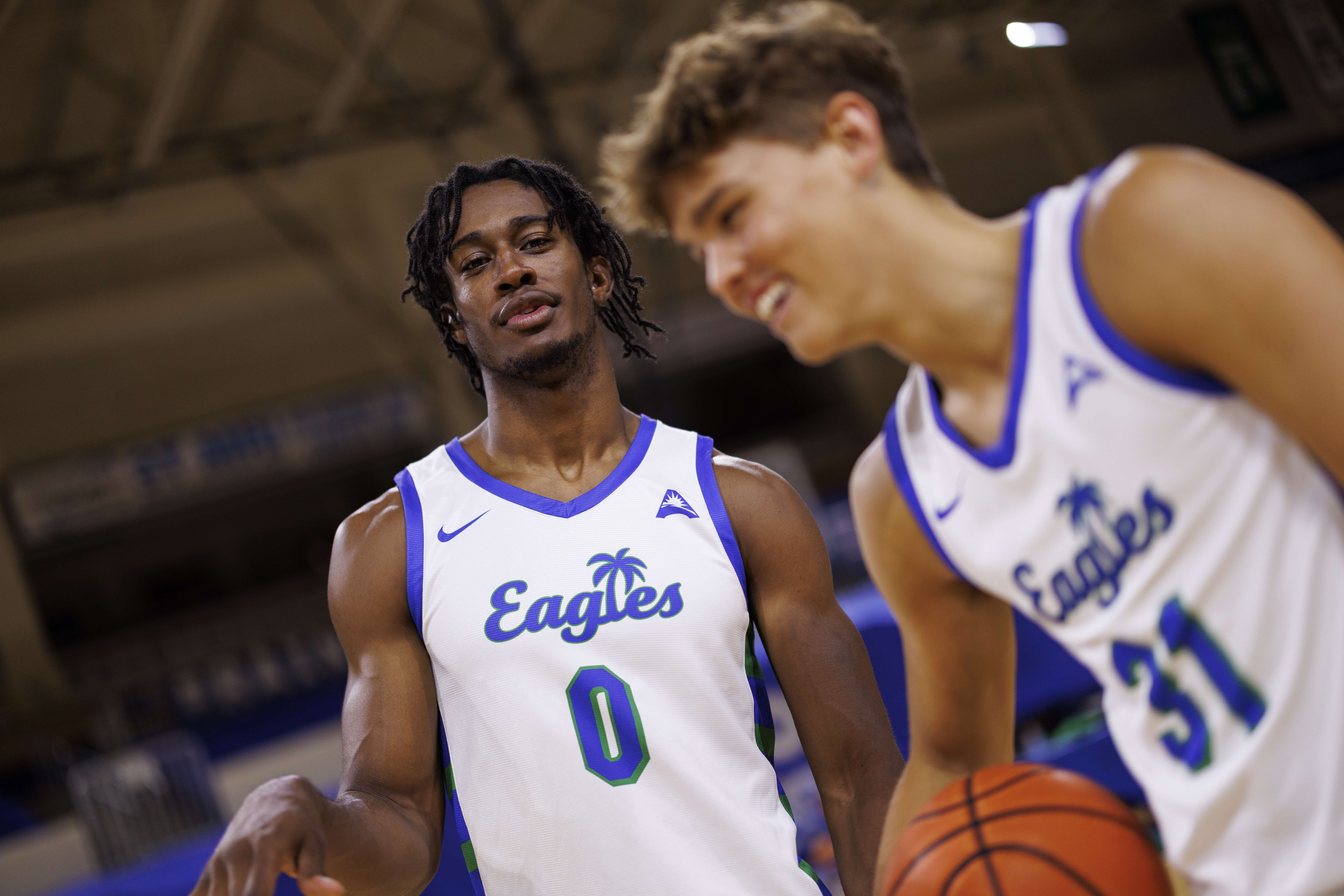
Paths to success
Soccer player Stephen Linton is another FGCU athlete taking advantage of NIL, but he is traveling a different route: He’s a product of the Entrepreneurship School’s Runway Program. He received around $2,500 after making a pitch for his affordable streetwear brand of clothing Silkedbys.
He designed the clothes, built his website, silkedbys.com, and found a manufacturer in Pakistan. He works about 15 hours a week on the business, and made about $10,000 last year, he said.
FGCU’s coaches will continue to tout success stories such as Linton’s. The athletic department will continue to educate students about the opportunities available, such as the Runway Program and NIL store.
Hudash would love to see a collective started, but he doesn’t think that will happen soon.
“I don’t think the administration is ready,” he says. “But we are definitely educating ourselves. … “We’re getting to the point where if you don’t have a collective, you’re in the basketball minority.”

